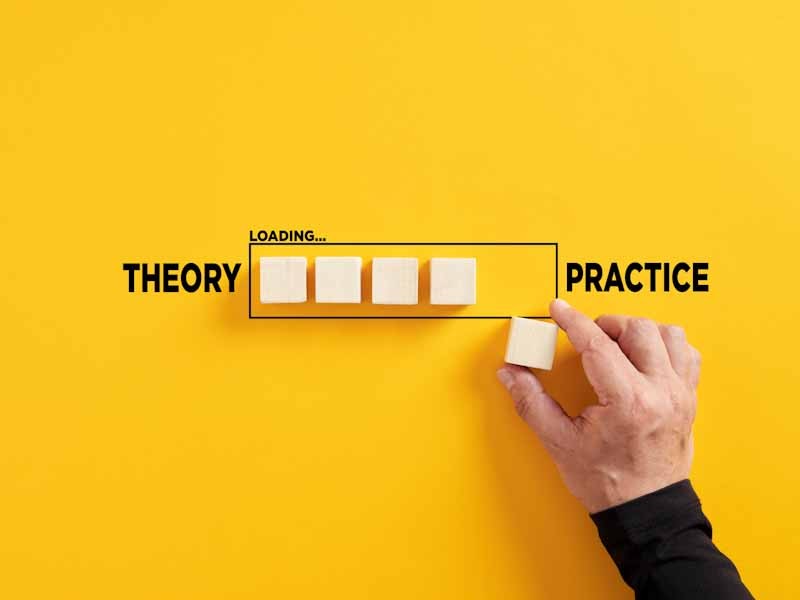The most important skills of the L&D disruptor––and how to build them
Jun 11, 2024

This post is part of our series on L&D disruptors, that is, leaders––both in the learning function and elsewhere in the organization––who are disrupting the “old way” of thinking about learning and using great learning experiences to solve sticky business problems and drive transformation.
For a full definition of L&D disruptors, check out: What is an L&D Disruptor, and why do they matter?
To learn more about the qualities of L&D disruptors, check out: The Four Traits of the L&D Disruptor.
And to discover if you’re already an L&D disruptor––or if you’re on your way to becoming one––check out our L&D Disruptor Quiz.
Today, we’re going to discuss the skills that make L&D disruptors effective, with specific takeaways for each to help you strengthen these skills in your own work.
Disrupting L&D: From belief to action
If you’re reading this, you’re probably already convinced that learning is important. We don’t need to persuade you that L&D can change organizations and careers. In fact, you likely spend a lot of time persuading your internal stakeholders of just that fact.
But there’s a difference between knowing something is true and operationalizing that truth within your organization. And that’s the difference that makes L&D disruptors so effective in their work. They’re able to put their plans into action and get things done.
Let’s take a look at how.
The three key skills of L&D disruptors
There are a few important skills that help these leaders turn their ideas into effective learning programs with significant buy-in across their organization. Here, we share three of the skills we typically see in the many L&D disruptors we’ve worked with during the past ten years.
1. Understanding the wider business.
What it is
At many organizations, learning is siloed from the rest of the business, with learning outcomes completely divorced from the metrics C-suite leaders are using to measure the health and success of the company.
The most strategic learning and functional capability leaders turn this dynamic on its head. They make it their mission to deeply understand the business and work cross-functionally to support organizational goals. With this knowledge, they’re able to map their learning strategy onto the wider business strategy. This ultimately makes what they’re doing with their learning initiative much more legible and relevant to stakeholders across the organization.
How to get started
A few helpful steps to consider to deepen your understanding of the wider business (and use this knowledge to inform your learning strategy):
- Meet with top leadership. Work to understand their mindset, including how they think about your company’s key differentiators, the most important current priorities for the business, and how progress toward core business goals will be measured across different time horizons.
- Assess the state of your cross-functional collaboration. Where can you strengthen your firsthand knowledge of what other teams are working on? How can you further cultivate the cross-functional partnerships you already have?
- Seek out customer and client voices. The customer voice is one of the most important inputs to inform your understanding of the business. This might include sales and client services calls, market research, industry forums, social media, product reviews, or content from other public-facing networks.
2. Identifying the most important learning gaps and building their learning programs around them.
What it is
Even within a particular function, there are likely hundreds––if not thousands––of different skills and capabilities employees need to successfully execute their jobs each day. Toss in a quickly-changing skills landscape across both technical and nontechnical domains, and the picture becomes even more overwhelming.
A core skill of L&D disruptors is cutting through the noise and focusing on what’s most important. These leaders are able to identify the most acute and important learning gaps and design their learning programs to focus on those skills. Often, these learning gaps include so-called “soft skills” like creativity, critical thinking, and empathetic leadership––capabilities that will continue to be high-impact even as technology, processes, and job roles shift.
One important note is that once you’ve identified the most crucial learning gaps, part of your role as a learning disruptor will be to prioritize––and push back on requests for learning that don’t address these crucial areas. One of the L&D disruptors we spoke with, Mike Kennedy, SVP, Leadership and Management Development at IPG Mediabrands, said, “If you’re not saying no to some things, that means you don’t have a strategy.” He recounted several times he had turned a request for a specific learning program into a more consultative conversation, where he could address the root cause and the real gap rather than just the symptom.
How to get started
A few questions to help you identify learning gaps include:
- How have job roles or ways of working changed in my organization during the past year? How can my learning program support these transformations?
- What tactics and information are available to me for measuring employee skills and capabilities? (Skills assessments, performance data, historical learning data, etc.)
- How is my organization doing on employee engagement and retention, and how might my learning strategy help bolster this?
- What does collaboration typically look like at my organization? Which broad capability areas could best support this style of collaboration?
- What current or past learning initiatives have shown little to no results? How can we make this different?
- What do employees see as their most critical learning needs?
3. Selling internally.
What it is
Potentially the most important skill L&D disruptors have is their ability to sell internally. They’re able to make their enthusiasm for learning contagious by telling the story of its impact and garnering support from the C-suite, key functional leaders, and beyond.
With skills #1 and #2 in play, selling internally becomes much easier. Because L&D disruptors understand the wider business and are using their learning programs to target the most important gaps, they’re much more effective in telling their story to leaders in disparate parts of the organization. They’re true cross-functional players, and the connections and support they’ve fostered across the business all combine to enable them to put their vision into action.
How to get started
Here are a few important strategies to think about as you hone your skill of selling internally.
- Build your coalition. Who are the cheerleaders for learning in your organization? Capitalize on their enthusiasm to reach stakeholders who may be more skeptical of your program’s potential for impact.
- Tell a story. Work on your storytelling skills to get people on board, including documenting your successes, crafting a compelling narrative, and getting creative with how you highlight the data that backs it all up. (Make sure you include stories from employees in the learning initiatives who can articulate how the learning has helped them be more effective in their work!)
- Focus on measurable, and relevant, outcomes. Now that you know the goals and metrics business leaders have in mind, leverage the numbers that show your program’s impact––and tie those back to the goals that matter most to your stakeholders.
Why disrupting L&D matters
You may have noticed these aren’t exactly quick fixes. As John Heiser, Founder & CEO TRG Management Solutions, LLC, says, “Learning is longitudinal.” He believes part of our work as L&D leaders is to help our stakeholders understand that truly impactful learning isn’t a “one and done,” but rather an ongoing process, where people need time to apply their skills, reflect, and return to the learning again and again.
It’s the same with growing from an L&D leader to a real L&D disruptor. The questions and steps we share here provide a starting place and a mental framework, but the skills we reference are ones leaders will spend their entire careers building. In fact, in our conversations with L&D disruptors, they often express the feeling that they’re still growing, learning, and deepening these same skills as they go––an attitude that also lends itself to success.
At so many organizations, learning is woefully underutilized, leaving people and companies susceptible to falling behind or being left out of some of the most important and profound changes happening in the workforce right now.
When we talk about disrupting learning, we’re really talking about being inherently optimistic about the future of our teams and organizations. And being optimistic about how learning can support that future. So while the journey to disrupting L&D isn’t easy, it is certainly worthwhile.
*
If you liked this post, you may also be interested in…
*
For an example of one L&D disruptor in action, get a free copy of our case study with AB InBev, where you can dive deeper into how Ryan Verschoor used cohort-based learning to help transform the company’s global marketing organization.
Interested to learn more about how Nomadic works with L&D disruptors, and what this could look like at your company? Get in touch and we’ll reach out to set up a meeting!



